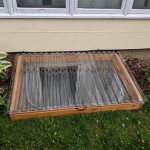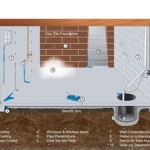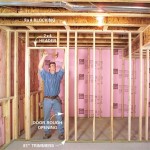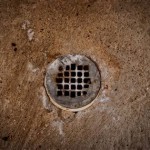Best Ways to Get Rid of Mold Smell in Basement
A musty, unpleasant odor in a basement frequently indicates the presence of mold. This can be alarming for homeowners, not only because of the potential health risks associated with mold exposure, but also due to the structural damage it can cause to the property. Identifying and eliminating the source of the mold smell, rather than simply masking it, is crucial for creating a healthy and safe living environment. This article will outline effective strategies for eradicating mold odors in basements, focusing on source identification, proper cleaning techniques, and preventative measures.
Identifying the Source of the Mold Smell
Pinpointing the origin of the mold smell is the first and most vital step in eliminating it. Mold thrives in damp, dark, and poorly ventilated environments, making basements particularly susceptible. A thorough inspection of the basement is necessary to locate the source of the odor. This involves examining walls, floors, ceilings, and any stored items for visible signs of mold growth. Look for discoloration, staining, or a fuzzy texture, which are all common indicators of mold.
Begin by checking areas prone to moisture accumulation. These include corners, areas around pipes and windows, and any locations that have previously experienced leaks or flooding. Pay close attention to drywall, wood, and carpeting, as these materials are porous and readily absorb moisture. If the odor is strong in a particular area, it is likely the source of the mold. Sometimes, the mold growth may be hidden behind walls or under flooring, necessitating a more invasive inspection. If you suspect hidden mold, consider consulting a professional mold inspector who can use specialized equipment to detect mold in inaccessible areas.
A moisture meter can be a useful tool for identifying areas with elevated moisture levels, even if visible mold is not immediately apparent. This device measures the moisture content of materials, helping to pinpoint areas where mold growth is likely to occur. Comparing moisture readings in different areas of the basement can highlight problem spots requiring further investigation. Remember that addressing the underlying moisture source is critical for preventing future mold growth. This could involve repairing leaks, improving ventilation, or dehumidifying the space.
Effective Cleaning Techniques for Mold Removal
Once the source of the mold has been identified, the next step is to thoroughly clean and remove the mold. The specific cleaning method will depend on the type of surface affected and the extent of the mold growth. For small areas of mold growth on non-porous surfaces like concrete or tile, a simple solution of bleach and water can be effective. Mix one part bleach with ten parts water and apply the solution to the affected area. Allow the solution to sit for approximately 10-15 minutes before scrubbing with a brush. Rinse the area thoroughly with clean water and allow it to dry completely. Ensure adequate ventilation during the cleaning process by opening windows or using a fan.
For porous materials like drywall or wood, bleach may not be the best option, as it can penetrate the surface and contribute to moisture buildup. Instead, consider using a mold-killing cleaner specifically designed for porous surfaces. These cleaners typically contain antimicrobial agents that penetrate the material and kill the mold spores. Follow the manufacturer's instructions carefully when applying these cleaners. In some cases, it may be necessary to remove and replace heavily infested materials, particularly if the mold growth is extensive or deeply embedded.
When dealing with mold, it is essential to protect oneself from potential exposure. Wear appropriate personal protective equipment (PPE), including gloves, a mask, and eye protection. This will help prevent inhalation of mold spores and contact with the skin. After cleaning, dispose of any contaminated materials, such as sponges or cloths, in sealed plastic bags to prevent the spread of mold spores. If dealing with a large area of mold growth or if you have health concerns, consider hiring a professional mold remediation company. These companies have the expertise and equipment to safely and effectively remove mold from your basement.
Preventative Measures to Inhibit Mold Growth
After successfully removing the mold and eliminating the associated odor, it is crucial to implement preventative measures to inhibit future mold growth. The key to preventing mold is to control moisture levels in the basement. This can be achieved through several strategies, including improving ventilation, dehumidifying the space, and addressing any sources of water intrusion.
Proper ventilation is essential for circulating air and reducing humidity. Ensure that the basement has adequate ventilation by opening windows or installing exhaust fans. If the basement is prone to dampness, consider using a dehumidifier to maintain a relative humidity level below 60%. Regularly check and empty the dehumidifier's water reservoir to prevent it from overflowing. Addressing any sources of water intrusion is also critical. Repair any leaks in the foundation, pipes, or windows. Ensure that gutters and downspouts are properly functioning to divert water away from the foundation. Grading the soil around the foundation so that it slopes away from the house can also help prevent water from seeping into the basement.
In addition to controlling moisture levels, regular cleaning and maintenance can also help prevent mold growth. Periodically inspect the basement for signs of mold and address any issues promptly. Clean up any spills or leaks immediately and ensure that stored items are kept dry. Avoid storing cardboard boxes or other absorbent materials directly on the floor, as these can attract moisture and provide a breeding ground for mold. Using plastic storage containers can help protect items from moisture and pests.
Consider applying a mold-resistant paint to the basement walls and ceilings. These paints contain antimicrobial agents that inhibit mold growth. Ensure that the surface is clean and dry before applying the paint. Finally, maintain good airflow throughout the basement by keeping doors open and arranging furniture in a way that does not obstruct ventilation. By consistently implementing these preventative measures, homeowners can significantly reduce the risk of mold growth and maintain a healthy and odor-free basement.
While these steps offer a robust approach to dealing with mold smell in the basement, it's important to remember that severe or persistent mold issues may require professional intervention. Consulting with a mold remediation specialist can provide a comprehensive assessment and tailored solutions for complex situations.

How To Get Rid Of Mold And Mildew Smell In Your Basement Aircare

Get Rid Of Musty Odor In Basement Servicemaster Restore

Musty Basement Odor Removal Firestone Restoration Ottawa

Moldy Odor In Basement How To Handle

8 Steps To Get Rid Of Musty Basement Smells Baker S Waterproofing

How To Get Rid Of Musty Smell In Basement

How To Get Rid Of Basement Odor And Why It Smells In The First Place

Musty Smell In The Basement 4 Steps To Freshness Bob Vila

Musty Mildew Smell Remover For Home And Basement Odor Eliminator Odors

Musty Smells In The House Finding Them And Getting Rid Of
Related Posts







